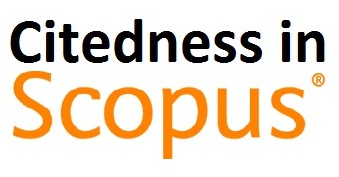Selection of External Factors for enhanced Technological Acceptance Model for E-Learning
DOI:
https://doi.org/10.38043/tiers.v3i1.3517Keywords:
TAM, E-Learning, Pandemic, Systematic ReviewAbstract
A properly regulated e-learning process is one of the utmost needs of this globe these days due to the pandemic. In that sense, researchers have been conducting research but none of those provide a global solution because of selected external factors and sample size. Therefore, this study provides a significant suggestion to select EFs and future research direction by conducting a systematic review study. Therefore, EFs must include not only student perspectives but also staff and parents, similarly, EFs must include not only user-friendliness, system quality, content quality, satisfaction, and self-efficacy but also technical support, anxiety, privacy, and security. Furthermore, the same study analyzes and suggested the most required future research direction for TAM for E-learning such as Developing VR and augmented reality e-learning tools, understanding the use of e-learning from qualitative perspectives through interview or focus group discussions, and Game-based educational tools. Furthermore, selecting the articles for this study was challengeable due to less number of articles published recently and closed access permission.
Downloads
References
N. Vandana, “E-Learning during a global pandemic,” Asian J. Distance Educ., vol. 15, no. 1, pp. 189–195, 2020.
M. Chuttur, “Overview of the Technology Acceptance Model: Origins , Developments and Future Directions,” Sprouts Work. Pap. Inf. Syst., vol. 9, no. 37, pp. 1–23, 2009, doi: 10.1021/jf001443p.
K. P. Spindler, “How to Write a Systematic Review,” Clin. Orthop. Relat. Res., vol. 455, pp. 23–29, 2007, doi: 10.1097/BLO.0b013e31802c9098.
S. A. Salloum, A. Qasim Mohammad Alhamad, M. Al-Emran, A. Abdel Monem, and K. Shaalan, “Exploring students’ acceptance of e-learning through the development of a comprehensive technology acceptance model,” IEEE Access, vol. 7, pp. 128445–128462, 2019, doi: 10.1109/ACCESS.2019.2939467.
M. Mailizar, D. Burg, and S. Maulina, “Examining university students’ behavioural intention to use e-learning during the COVID-19 pandemic: An extended TAM model,” Educ. Inf. Technol., vol. 26, no. 6, pp. 7057–7077, 2021, doi: 10.1007/s10639-021-10557-5.
M. O. Alassafi, “E-learning intention material using TAM: A case study,” in Materials Today: Proceedings, 2021, no. xxxx, doi: 10.1016/j.matpr.2021.09.457.
A. N. Kusumadewi, N. A. Lubis, R. Prastiyo, and D. Tamara, “Technology Acceptance Model (TAM) In The Use of Online Learning Applications During The Covid-19 Pandemic For Parents of Elementary School Students,” Edunesia J. Ilm. Pendidik., vol. 2, no. 1, pp. 272–292, 2021, doi: 10.51276/edu.v2i1.120.
R. Ibrahim, N. S. Leng, R. C. M. Yusoff, G. N. Samy, S. Masrom, and Z. I. Rizman, “E-learning acceptance based on technology acceptance model (TAM),” J. Fundam. Appl. Sci., vol. 9, no. 4S, p. 871, 2018, doi: 10.4314/jfas.v9i4s.50.
A. Al-Azawei, P. Parslow, and K. Lundqvist, “Investigating the effect of learning styles in a blended e-learning system: An extension of the technology acceptance model (TAM),” Australas. J. Educ. Technol., vol. 33, no. 2, pp. 1–23, 2017, doi: 10.14742/ajet.2741.
M. Mailizar, A. Almanthari, and S. Maulina, “Examining teachers’ behavioral intention to use e-learning in teaching of mathematics: An extended tam model,” Contemp. Educ. Technol., vol. 13, no. 2, pp. 1–16, 2021, doi: 10.30935/CEDTECH/9709.
R. Cakir, “EXPLORING THE FACTORS INFLUENCING E-LEARNING OF TURKISH EFL LEARNERS THROUGH TAM,” TOJET Turkish Online J. Educ. Technol., vol. 13, no. 3, pp. 79–87, 2014.
M. A. Al-hawari and S. Mouakket, “The influence of technology acceptance model ( TAM ) factors on students ’ e-satisfaction and e-retention within the context of UAE e-learning,” Educ. Bus. Soc. Contemp. Middle East. Issues, vol. 3, no. 4, pp. 299–314, 2010, doi: 10.1108/17537981011089596.
C. Gamble, “Exploring EFL University Students ’ Acceptance of E learning Using TAM,” Humanit. Rev., vol. 22, pp. 23–37, 2017.
M. Kayali and S. Alaaraj, “Adoption of Cloud Based E-learning in Developing Countries: A Combination of DOI, TAM and UTAUT IJCMIT IJCMIT International Journal of Contemporary Management and information Technology Adoption of Cloud Based E-learning in Developing Countries: A Combina,” Int. J. Contemp. Manag. Inf. Technol., vol. 1, no. 1, 2020, [Online]. Available: www.ijcmit.com.
A. Khafit, S. Sulastri, and S. Fauzan, “Technology Acceptance Model (TAM): Measurement Of E- Learning Use by Accounting Students at Malang State University,” Asia Pacific J. Manag. Educ., vol. 3, no. 3, pp. 64–72, 2020, doi: 10.32535/apjme.v3i3.969.
I. A. C. Jimenez, L. C. C. García, M. G. Violante, F. Marcolin, and E. Vezzetti, “Commonly used external tam variables in e-learning, agriculture and virtual reality applications,” Futur. Internet, vol. 13, no. 1, pp. 1–21, 2021, doi: 10.3390/fi13010007.
I. A. C. Jimenez, L. C. C. García, F. Marcolin, M. G. Violante, and E. Vezzetti, “Validation of a tam extension in agriculture: Exploring the determinants of acceptance of an e-learning platform,” Appl. Sci., vol. 11, no. 10, 2021, doi: 10.3390/app11104672.
M. M. Zalat, M. S. Hamed, and S. A. Bolbol, “The experiences, challenges, and acceptance of e-learning as a tool for teaching during the COVID-19 pandemic among university medical staff,” PLoS ONE, vol. 16, no. 3. 2021, doi: 10.1371/journal.pone.0248758.
B. Al Kurdi, M. Alshurideh, S. A. Salloum, Z. M. Obeidat, and R. M. Al-dweeri, “An empirical investigation into examination of factors influencing university students’ behavior towards elearning acceptance using SEM approach,” Int. J. Interact. Mob. Technol., vol. 14, no. 2, pp. 19–41, 2020, doi: 10.3991/ijim.v14i02.11115.
A. Farooq, F. Ahmad, N. Khadam, B. Lorenz, and J. Isoaho, “The impact of perceived security on intention to use e-learning among students,” Proc. - IEEE 20th Int. Conf. Adv. Learn. Technol. ICALT 2020, pp. 360–364, 2020, doi: 10.1109/ICALT49669.2020.00115.
H. Baber, “Modelling the acceptance of e-learning during the pandemic of COVID-19-A study of South Korea,” Int. J. Manag. Educ., vol. 19, p. 100503, 2021.
S. Sukendro et al., “Using an extended Technology Acceptance Model to understand students’ use of e-learning during Covid-19: Indonesian sport science education context,” Heliyon, vol. 6, no. 11, p. e05410, 2020, doi: 10.1016/j.heliyon.2020.e05410.
A. Patricia Aguilera-Hermida, “College students’ use and acceptance of emergency online learning due to COVID-19,” Int. J. Educ. Res. Open, vol. 1, no. July, p. 100011, 2020, doi: 10.1016/j.ijedro.2020.100011.
K. Zarafshani, A. Solaymani, M. D’Itri, M. M. Helms, and S. Sanjabi, “Evaluating technology acceptance in agricultural education in Iran: A study of vocational agriculture teachers,” Soc. Sci. Humanit. Open, vol. 2, no. 1, p. 100041, 2020, doi: 10.1016/j.ssaho.2020.100041.
A. H. Mousa, M. Aljshamee, A. H. Mohammed, S. H. Mousa, S. H. Mousa, and H. A. Obaid, “A systematic literature review: Measuring user acceptance models in e-learning adopted in higher education institutes,” AIP Conf. Proc., vol. 2290, no. December, 2020, doi: 10.1063/5.0027409.
Downloads
Published
How to Cite
Issue
Section
License
Copyright (c) 2022 Mohamed Nafrees Abdul Cader

This work is licensed under a Creative Commons Attribution-ShareAlike 4.0 International License.





















